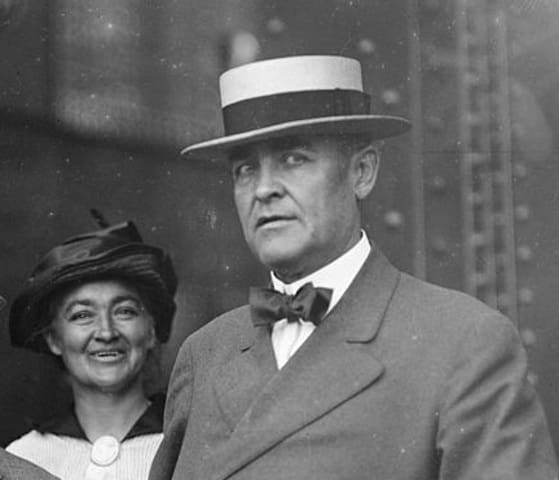My best friend Michael was robbed at gunpoint, shot several times, and left for dead in the icy slush of a New York City gutter. It was the late 1970s, and the Sullivan Act had been protecting New Yorkers from gun violence for more than 65 years. In theory. In reality, my unarmed friend was shot and nearly killed for less than $20 by a remorseless smear of human excrement. A junkie or psychopath who knew that his law-abiding victims would be defenseless against the .22 caliber revolver he carried, and whose “no witnesses” policy helped insure that he was never brought to justice for this crime.
Michael felt very little pain as he lay paralyzed by a bullet fragment lodged in his upper spine. He was a man of faith, and he was thankful that he was going to meet his creator with his eyes open and his mind alert. He was also thankful that he hadn’t fallen face-down in the slush, because drowning in a slurry of ice and road-salt would be even worse than bleeding out.
Michael was a delivery driver, ferrying newspapers and cigars and what-have-you around the surprisingly rural environs of northeast Pennsylvania, northern New Jersey, and downstate New York. He typically carried a pistol in his truck, or even a rifle for lawful targets of opportunity during deer season, and he had never been hassled in his infrequent encounters with rural law enforcement.
New York was a different story, and he knew never to bring a gun into the city or its outskirts when his route occasionally took him there. His would-be murderer, a natural predator, was aware of this as well.
During the 1970s and early 1980s, used or stolen .22 revolvers could be purchased by New York’s criminal underclass for less than $50. Usually manufactured by Harrington & Richardson or Iver Johnson, they cost less than $100 brand-new and were known collectively as “Owlies.” They owed their street name to owl emblem of the Iver Johnson logo, and they were sold (by scumbags, to scumbags) in the back rooms of corner bodegas and even in black-market gun stores selling ammunition and holsters.
In the criminal culture of the time, any punk with $50 could buy an Owlie in a matter of hours. Carrying a fancier gun like a .45 or a 9mm gave you more of a badass reputation, but such firepower was rare and conspicuous on the street and tended to leave evidence (spent shell casings) at the crime scene if you actually had to shoot someone with it. By contrast, Owlies were cheap, easy to obtain, and impossible for witnesses to positively identify.
Michael was noticed by a Good Samaritan who immediately summoned help, and he did not lose consciousness until he was anaesthetized for emergency surgery. When he awoke he learned that his spine was not severed, and over the following months he regained the full use of his arms and torso. His legs never fully regained their strength, but he went back to work and collected several college degrees over the next two decades.
He never stopped hunting and shooting. Vowing that he would never be shot and left for dead twice in one lifetime, he was a CCW holder in several states. He didn’t believe in mouse guns; his carry pistol was a full-sized Government Model 1911, and at 6’4″ you never knew it was there.
We met in law school, and he honored me with his friendship and his generous spirit. He never failed to laugh at the indignities imposed on him by his physical handicaps, and would laugh and joke as I sometimes had to push or pull him up the gravel quarry walls to place or retrieve our targets. Later he got married, moved to Korea and became the father of two wonderful daughters. Several bullet fragments remained in his spine, embedded in vertebrae too close to the spinal cord to remove, and they caused him serious health problems for the rest of his life.
Having seen death and cheated it, Michael knew he was living on borrowed time and three years ago his debt came due. My best friend passed away far too young, in his mid-50s, another of the countless victims of the Sullivan Act, which ‘celebrates’ its 100th birthday this year.
To absent friends, shining still in memory.





It’s so easy for legislators to gin up laws, pass them, look at each other and say, “hey, we just got something done.”
Meanwhile, we have to live with the results of their “work.”
What a great story that humanizes the situation we still face here in New York State.
I’m deeply sorry about your friend, he truly is as much a victim of the law as the person who shot him.
I’m sorry for your loss. sounds like a man of character and class.
Thanks for that Chris. Stories from this side of the coin are what people need to consider when they’re out there petitioning for us to lose the right to protect ourselves from scum.
Sorry to hear about that, and I’m glad to hear he never buckled under the pressure.
If I may: Now that I think of it, I believe that most of the guns Fiorello LaGuardia threw into the Long Island Sound (along with plenty of slot and other “gambling” machines, including pinballs) were old long guns (shotguns and small-caliber rifles). Some old pictures of these events can be found online, some on Flickr, some at the Laguardia and Wagner Archives, others are licensed from Betmann / Corbis.
NY had a long-standing problem with organized crime violence even before the Sullivan Law, and ostensibly LaGuardia’s guns were captured in raids. Of course, taking some shopkeeper’s doorjamb or a barkeeper’s gun because of some tenuous mob affiliation didn’t do much to protect the people from extortion or recriminations. Organized crime still seemed to have plenty of firepower when it wanted it. Complicating things were contradictory approaches to policing, especially by the 1960s: Mayor Lindsay (I believe it was) used the mob to persuade youths not to riot, and caught hell for it; meanwhile the police were using undercover resources to entrap gay men, and it seemed like everybody was all but encouraging attacks on “reputed gangsters.” When the son of one of the Mafia bosses (Bill Bonnano) was shot at late one night on a quiet street, the police kept it under wraps for a long time; a few years later government agents threw explosives at his home in Arizona. All this at a time when the Mafia was essentially the extreme minority of organized crime, which was starting to fall under the sway of “eccentric Puero Rican and African-American” drug pushers, to quote Gay Talese.
The Mafia was brutal and essentially anti-democratic, but so were the systems that informed and forced their tactics in Italy and Sicily, and, to a lesser extent, so were the entrenched Tammany Hall and related New York power systems that didn’t cede power to the latest latecomers (just as the Irish and Eastern European immigrants before wrestled with the entrenched populations to make a living). Vito Corleone’s wish that a son would go into politics was only reflecting the hope that, unlike the old country, in the US you could eventually get some influence for your people. The one truth that you can see reflected sometimes in gangster histories is that a gentleman’s agreement is all that stops the banditry. The Mob was high profile but probably no more violent or bloody, even at their worst, than what came after. Or before.
Arguably politics and the media coverage made Italian gangsters fall guys for America’s failings in a way that parallels the undue attention given to a group of gun owners, with the differences being that the majority of legally-minded gun owners are peaceful.
Mayor Bloomberg has learned these lessons, too. He uses a ‘community-inclusive’ approach that makes it seem, unlike the ham-handed and defensive posturing of Rudy Giuliani who always rushed to defend the police and alienated much of the public, that in Bloomberg’s town black youths are better respected even while they are being randomly frisked more often than before.
I think they have a saying in New York these days: “When Bloomberg outlaws 32s, only outlaws will have 32s” (that’s 32 ounce sodas, though).
From Wikipedia:
***According to Richard F. Welch, who wrote a 2009 biography of Sullivan, “all the available evidence indicates that Tim’s fight to bring firearms under control sprang from heartfelt conviction.” Sullivan’s contemporaries disagreed with this assessment and saw the law as disarming lawful citizens or as a way for Sullivan to guarantee his bodyguards could be legally armed while using the law against his political opponents. Lawman Bat Masterson, a friend of Sullivan’s, criticized the law as “obnoxious” and said that he questioned Sullivan’s mental state of mind over the law. ***
Comments are closed.